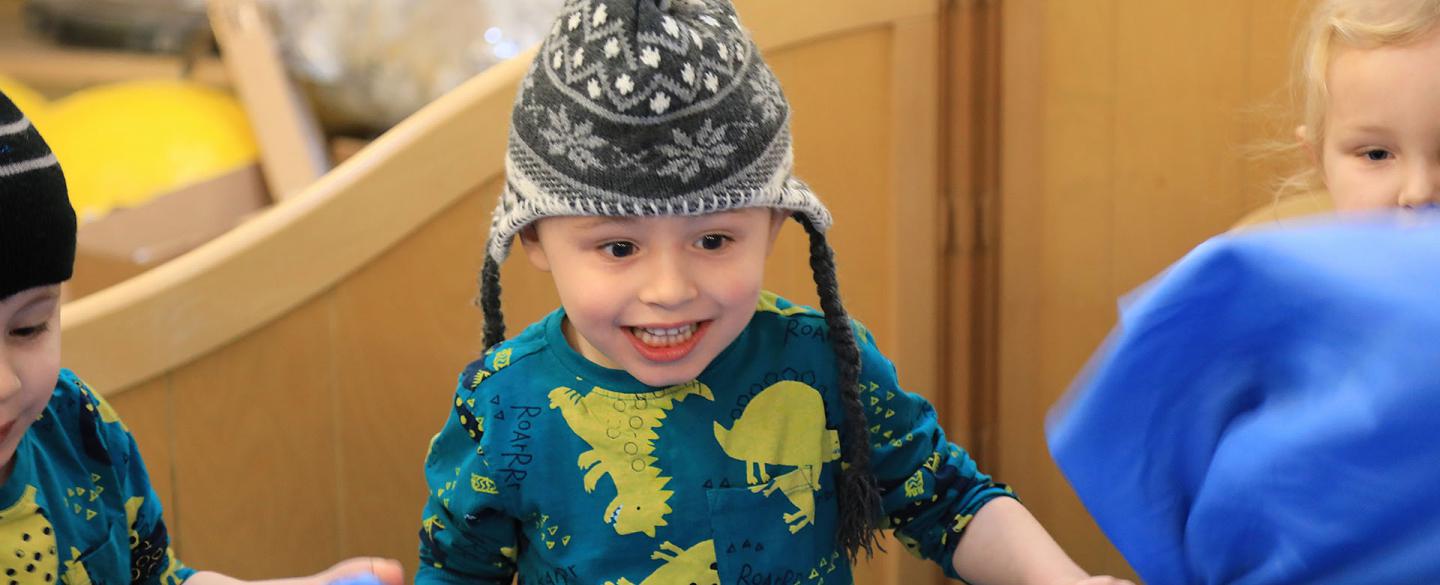

Designed for children’s centres and nurseries, our artist-led Early Years projects introduce young children to dance through music, storytelling, and multi-sensory play.
Sessions bring to life the stories of much-loved children’s books:
Using sensory resources, the environments in the story are recreated in your centre. Children are encouraged to respond creatively to the story and share their ideas with each other, enabling them to develop confidence, self-expression and language skills.
The projects support characteristics of effective learning: playing and exploring, active learning, creative and thinking critically and link to the following early learning goals.
| Communication and language development | Listening, attention and understanding Speaking |
|---|---|
| Physical development | Gross motor skills Fine motor skills |
| Personal, social and emotional development | Managing self Building relationships |
| Expressive arts and design | Creating with materials Being imaginative and expressive |
| Understanding the world | The natural world |
| Supports children with English as an Additional Language (EAL) by providing opportunities for non-verbal communication and repetition of familiar vocabulary | |
'The project has had a very positive impact on the children’s well-being and emotional development. Their confidence grew significantly over the weeks... The children were all encouraged to express themselves in a variety of different ways and were given the opportunity to communicate their ideas. As a result, their communication skills and self-confidence have improved.'
We can deliver a project with you anytime in the academic year. Our schedule fills up fast so get in touch with plenty of time. The project runs for 5 consecutive weeks and the sessions are 1 hour in length.
The project will be delivered at your centre.
The basic project costs £250+VAT which includes all five weekly sessions, one hour in length, and an accompanying resource pack.
For centres outside of Leeds there are additional costs for the artists’ travel. Get in touch for a bespoke quote.
The package can be developed to include twilight training and mentoring to support centre staff to deliver sensory and movement activities as a regular part of their work.
Any centre can book a project but prices may increase for centre’s outside of Leeds. Get in touch for a bespoke quote.
We can work with up to 12 children when there are at least two centre staff supporting. We can work with up to 8 children when there is one member of centre staff supporting.
For centres that book the CPD package, you will learn the skills to deliver similar sessions yourself, reaching even more children.
At least one member of centre staff must support the sessions, with two centre staff required for us to work with more than 8 children in a session.
We will bring the story book, music and some sensory resources. Before your project starts, we will chat with you to see what resources you already have. We may come and visit your centre in advance to look at your space, and if the weather permits, we may even work outside.
Depending on the adventure in your story, we may use: large and small pieces of fabric, parachutes, fake or real grass and leaves, compost, water, ice, percussion instruments, paint and paper, flour, glitter, bubble wrap, fans and dressing up clothes.
Before delivery begins, we will give you a resource pack so you know what activities and resources we will use each week. The resource pack can also support you to deliver the project again without our assistance.
We can also provide a twilight CPD session for staff to better support you to deliver sensory and movement exploration after the project has finished.
To find out more and book your project contact learning@northernballet.com or call 0113 200 8000.